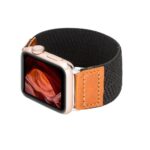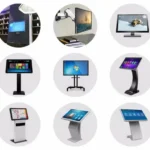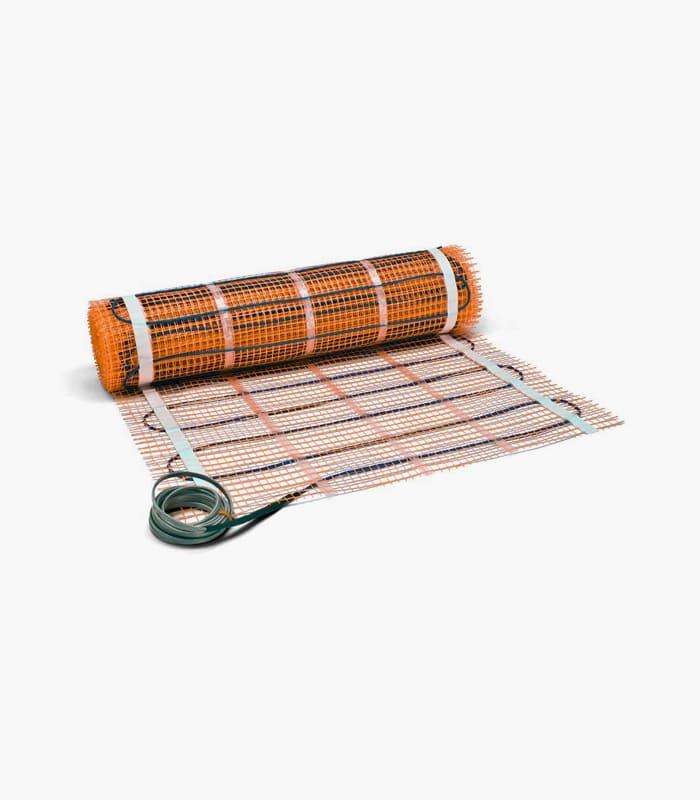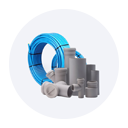MODULE 4: Flow Measurement (Liquids, Gas, Steam)

Introduction
Flow measurement is a foundational aspect of process control and instrumentation in industrial systems. Accurate flow data is essential for balancing inputs and outputs, ensuring efficiency, maintaining safety, and optimising production. Whether you’re transferring hydrocarbons in oil and gas, monitoring feedwater in a power station, or controlling chemical dosing in a manufacturing plant, understanding flow measurement technologies is indispensable.
This module provides a comprehensive overview of key flow measurement techniques, including their operating principles, selection criteria, installation practices, and use cases across manufacturing, power, energy, oil & gas, and nuclear sectors.
Section 1: Principles of Flow Measurement
There are several principles and methods for measuring the flow of liquids, gases, and steam. Each method operates based on specific physical phenomena and is suited to different applications.
1.1 Differential Pressure (DP) Flow Measurement
DP flow meters infer flow rate from the pressure drop caused by a restriction in the flow path. Common primary elements include:
- Orifice Plates
- Venturi Tubes
- Flow Nozzles
Operating Principle: Bernoulli’s equation describes the relationship between pressure and velocity. When fluid flows through a restriction, velocity increases and pressure decreases. The pressure drop is proportional to the square of the flow rate.
Applications:
- Feedwater flow measurement in power plants
- Compressed air systems in manufacturing
Visuals:
- Animation of fluid accelerating through an orifice plate.
- Step-by-step diagram of orifice plate installation.
1.2 Magnetic Flow Meters (Electromagnetic)
These meters measure flow by detecting the voltage generated when a conductive fluid flows through a magnetic field.
Operating Principle: Based on Faraday’s Law of Electromagnetic Induction. Voltage generated is proportional to flow velocity.
Key Advantages:
- No moving parts
- Suitable for dirty or corrosive fluids
- Highly accurate
Applications:
- Chemical dosing in manufacturing
- Slurry and wastewater measurement in mining
Visuals:
- Cutaway animation of magnetic field and electrode placement.
1.3 Ultrasonic Flow Meters
These meters measure the velocity of fluid using ultrasonic signals. There are two main types:
- Transit-Time: Measures the time difference between signals sent upstream and downstream.
- Doppler: Measures frequency shift caused by suspended particles or bubbles.
Applications:
- Cooling water systems in nuclear plants
- Non-invasive flow checks during maintenance
Visuals:
- Diagram of ultrasonic pulse path in transit-time meters.
1.4 Coriolis Flow Meters
Coriolis meters measure mass flow rate directly by detecting the twisting of vibrating tubes caused by fluid flow.
Operating Principle: When fluid moves through vibrating tubes, the Coriolis force causes a phase shift or twist, which is proportional to mass flow.
Advantages:
- Direct mass flow measurement
- High accuracy
- Also provides density and temperature readings
Applications:
- Custody transfer in oil and gas
- Bunkering operations and fuel metering
Visuals:
- Animation showing twisting motion of tubes during fluid flow.
1.5 Vortex Flow Meters
These meters detect the frequency of vortices shed by a bluff body placed in the flow stream.
Operating Principle: As flow passes the bluff body, vortices form alternately on each side. The shedding frequency is proportional to flow rate.
Applications:
- Steam flow measurement in energy plants
- HVAC systems and district heating
Visuals:
- Flow animation with vortex shedding behind bluff body.
1.6 Turbine Flow Meters
Turbine meters use a rotor placed in the flow. The speed of the rotor’s rotation is proportional to flow velocity.
Applications:
- Fuel measurement systems
- Batching systems in chemical plants
Visuals:
- Diagram of fluid spinning a turbine rotor.
Section 2: Flow Meter Selection Criteria
When selecting a flow meter, several parameters must be considered:
| Parameter | Consideration |
|---|---|
| Fluid Type | Liquid, gas, or steam; conductive or non-conductive; clean or dirty |
| Flow Rate Range | Minimum and maximum expected flow rates |
| Accuracy Requirements | Custody transfer or general monitoring? |
| Installation Constraints | Available straight pipe runs, mounting orientation, access |
| Environmental Conditions | Temperature, pressure, hazardous area classification |
| Maintenance Requirements | Frequency of calibration, sensor fouling risk |
Industry Tip: Use Coriolis for mass flow accuracy, magnetic meters for slurries, and vortex meters for steam.
Section 3: Installation Requirements and Best Practices
3.1 Straight Run Requirements
To ensure accurate measurements, most flow meters require a specific length of straight pipe before and after the sensor.
| Meter Type | Upstream Requirement | Downstream Requirement |
| Orifice Plate | 10–15 pipe diameters | 5 pipe diameters |
| Magnetic | 5 pipe diameters | 3 pipe diameters |
| Vortex | 20 pipe diameters | 10 pipe diameters |
| Ultrasonic (Clamp-On) | Depends on transducer placement | Depends on application |
3.2 Orientation and Positioning
- Horizontal or vertical mounting must follow manufacturer guidelines.
- Avoid locations near elbows, valves, or pumps.
- Ensure full pipe conditions (no air pockets).
Visuals:
- Proper and improper meter placement diagrams.
3.3 Grounding and Shielding
For electromagnetic and ultrasonic meters:
- Use proper electrical grounding.
- Shield cables to prevent signal interference.
Section 4: Industry-Specific Applications and Case Studies
4.1 Oil & Gas: Custody Transfer with Coriolis Meters
Accurate fiscal metering of crude oil or refined product is crucial. Coriolis meters offer excellent repeatability and direct mass flow readings, reducing uncertainty in financial transactions.
System Setup:
- Inline Coriolis meter
- Flow computer
- Temperature and pressure compensation
4.2 Power Generation: Feedwater Flow with DP Meters
DP flow meters are robust and reliable for high-pressure, high-temperature applications like boiler feedwater.
Considerations:
- Condensate pot and impulse line setup
- High turndown ratio
4.3 Manufacturing: Chemical Dosing with Magnetic Meters
Mag meters ensure accurate and repeatable flow in dosing pumps and batch mixing processes. Non-intrusive nature reduces contamination risk.
Features:
- Self-cleaning electrodes
- Digital communication options (HART, Modbus)
4.4 Energy & Manufacturing: Steam Flow with Vortex Meters
Steam systems require rugged meters that can withstand vibration and pressure. Vortex meters meet this need with reliable output and temperature compensation.
Benefits:
- Wide flow range
- Suitable for saturated and superheated steam
4.5 Nuclear Industry: Cooling Water Flow with Ultrasonic Meters
In nuclear cooling systems, clamp-on ultrasonic meters allow for continuous monitoring without pipe intrusion, critical in radiation-sensitive areas.
Advantages:
- No pressure drop
- Minimal maintenance
Conclusion
Flow measurement is a core competency in industrial instrumentation. Selecting the right technology—whether differential pressure, magnetic, ultrasonic, Coriolis, vortex, or turbine—depends on the process conditions, measurement objectives, and environmental considerations. Proper installation and maintenance further ensure long-term accuracy and reliability.
Key Takeaways:
- Match flow meter to application based on fluid type, accuracy, and cost.
- Follow installation best practices to prevent flow disturbances.
- Use advanced meters like Coriolis or ultrasonic for critical or high-value applications.
Interactive Elements to Include:
Animated Videos
- Flow through an orifice plate (DP meter)
- Coriolis tube twisting motion
- Ultrasonic pulse transmission and reflection
Image Gallery
- Field-installed DP and magnetic flow meters
- Cutaway views of vortex and turbine meters
- Real-world ultrasonic installations in nuclear and power plants
Quiz Questions
- Match each flow meter type to its industry use-case
- Identify errors in meter installation diagrams
- Calculate flow rate from pressure drop (DP meter exercise)
References:
- Baker, R. C. (2016). Flow Measurement Handbook. Cambridge University Press.
- ISO 5167 Standards for Differential Pressure Flow Measurement.
- ISA (International Society of Automation) Guidelines.
- Emerson, Endress+Hauser, Siemens Flow Meter Application Notes.
End of Module 4 – Tamfitronics.com Training Series
Discover more from Tamfis Nigeria Lmited
Subscribe to get the latest posts sent to your email.



 Hot Deals
Hot Deals Shopfinish
Shopfinish Shop
Shop Appliances
Appliances Babies & Kids
Babies & Kids Best Selling
Best Selling Books
Books Consumer Electronics
Consumer Electronics Furniture
Furniture Home & Kitchen
Home & Kitchen Jewelry
Jewelry Luxury & Beauty
Luxury & Beauty Shoes
Shoes Training & Certifications
Training & Certifications Wears & Clothings
Wears & Clothings




